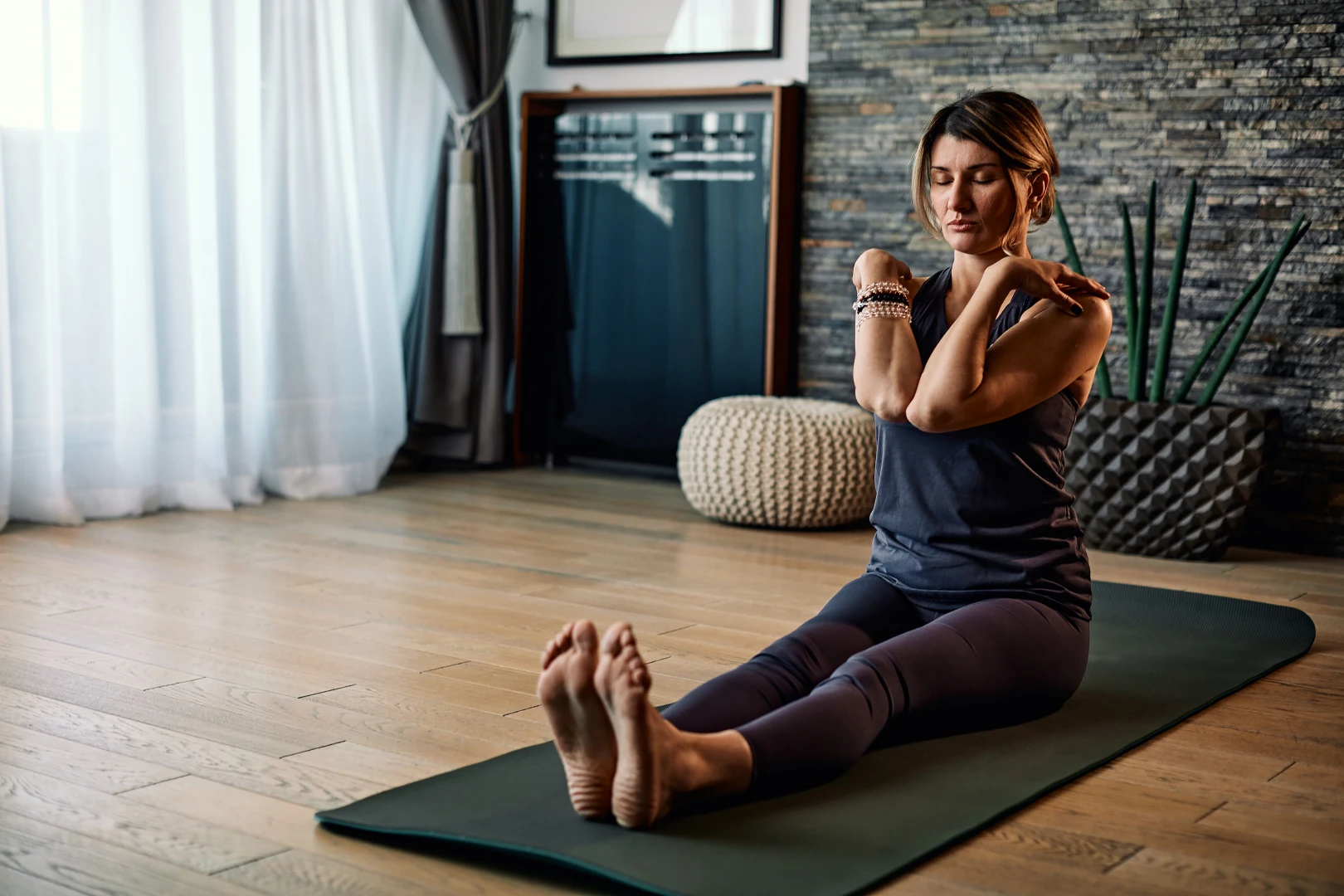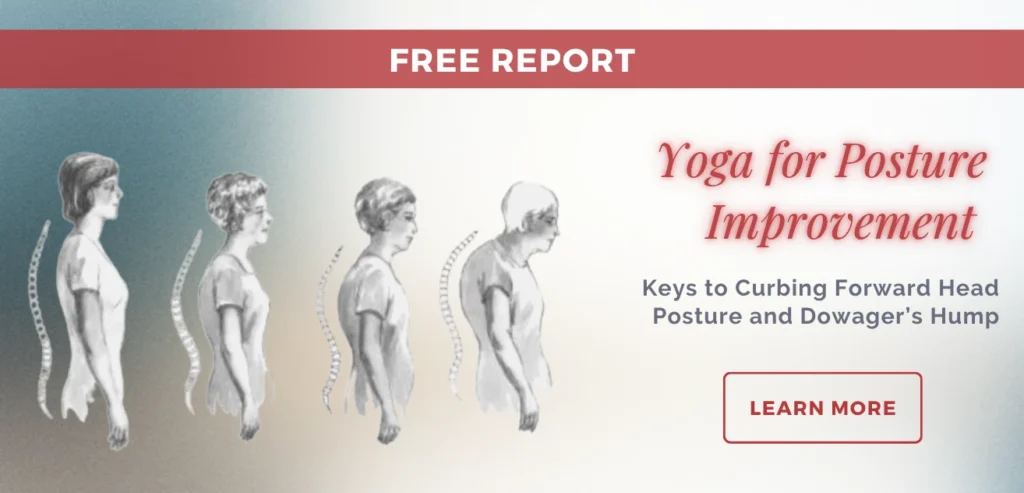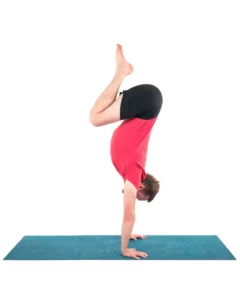Study: Yoga Can Help Foster Greater Mind-Body Integration – The Four Stages of Body Awareness

Your body is speaking – are you listening?
For the most part, we ignore subtle signs from our body. We eat more of that delicious ice cream than our body tells us we should, we don’t go to bed when we feel tired, we overrule feelings of fatigue during the day with an extra cup of Morning Joe.
But did you know that new research shows that paying attention to the many subtle cues from our body can make a big difference in our health and well-being?
Body awareness – or interoception as it is also referred to – is drawing renewed attention because of the many surprising benefits derived from enhanced body awareness.
And, as a new 2025-research review (published in Complementary Therapies in Clinical Practice) suggests, yoga can offer one of the most effective and reliable ways to enhance our body awareness.
The review looked at the results of 33 studies on the effects of yoga and mindfulness on body awareness. And while more research is needed, it concluded that there is compelling evidence that yoga significantly enhances body awareness and interoception—our ability to sense and interpret internal bodily signals.
The Many Benefits of Body Awareness
While it may seem like an inconsequential feature, we now know that enhanced body awareness creates a cascade of benefits that touch every aspect of our health and well-being.
Enhanced body awareness helps distinguish between true hunger, thirst, fatigue, and early signs of emotional discomfort. And importantly, when we heed these, it leads us to develop habits that honor the body’s needs.
Mentally and emotionally, feeling more anchored in your body is thought to provide a greater sense of security. When we become more aware of our body sensations early on, we can use that information to regulate our emotions – for example stopping what we are doing when we are feeling tense and stressed and switching to an activity like a walk or taking a break from work that helps us reset.
Body awareness can serve as the foundation for better emotional regulation—when we can tune into physical sensations without judgment, we develop the ability to identify emotional states early and respond more skillfully.
The Four Stages of Body Awareness
In the 2025-review study referenced above, the researchers suggest that body awareness has several layers with each one representing a more sophisticated aspect of body awareness. Based on a model first introduced by Wolf E. Mehling, a leading researcher in body awareness, they suggest the following stages in the development of body awareness.
Stage 1: Basic Awareness and Focused Attention
“Your body speaks in sensations,” renowned yoga teacher and author Jill Miller teaches.
This speaks to the first dimension of body awareness, which involves starting to perceive body sensations. In this stage, we develop the ability to identify inner sensations, discern subtle bodily cues, and note changes in body processes.
In this stage, we develop our foundational ability to recognize what’s happening in your body. Can you feel when your shoulders are tense? Do you notice changes in your breathing throughout the day? Can you sense when your body is telling you that you have been sitting for too long without moving? This basic noticing forms the foundation for everything else.
Stage 2: Developing the Quality of Attention Towards Bodily Sensations
The second stage describes the quality of attention towards the sensations and cues we receive from the body. This dimension is about your tendency to stay with whatever we’re feeling rather than immediately trying to escape or numb it. Instead of automatically reaching for our phone, turning on the TV, or keeping busy when you notice discomfort or difficult emotions, in the second dimension we develop a greater ability to simply be present with and curious about what’s arising in your body without getting overwhelmed.
In this stage, we can gradually develop the ability to notice body sensations without panicking or catastrophizing. We can observe these sensations with curiosity rather than immediately assuming something is wrong. We develop the capacity to stay calm and neutral with whatever your body is communicating.
Stage 3: Understanding the Body’s Emotional Language
This is perhaps one of the most transformative dimensions—recognizing that our body and emotions are intimately connected. We begin to notice how the body changes when we’re angry, sad, or excited, and we begin to trust and use our body awareness as a tool for managing difficult emotions.
When we’re feeling overwhelmed, for example, we might use a focus on the breath or simple yoga stretches to relax our tension and restore calm. In this stage, we learn to use our body’s cues as helpful early messengers that can help us restore emotional balance rather than being at the mercy of emotional storms.
Stage 4: Mind-Body Integration – Trusting Your Body’s Wisdom
This is perhaps the most profound dimension of body awareness—developing trust in the signals of our body. We come to experience your body as an important source of inner guidance, and we begin to trust the information it provides, rather than something to be ignored or overridden.
We begin to check in with our body before making decisions—does this choice feel right in our gut? Does our energy feel expanded or contracted when we think about a particular option? Does our body energy lift when we are in the company of a certain person or is it pulled down?
This stage also speaks to the sense of an ‘embodied self’, a felt sense of integration between our mental, physical, and emotional processes as opposed to a disembodied sense of alienation and of being disconnected from our body.
Does Yoga Help Increase Body Awareness?
The research evidence for yoga’s effects on body awareness is compelling. The 2025 systematic review quoted above found that 72% of studies examining changes showed significant increases in body awareness following yoga, while 76% of studies comparing yoga groups to control groups found significant differences in favor of yoga practice.
Why Yoga Works So Well
Unlike programs and practices that target single aspects of body awareness, yoga’s multidimensional approach creates broad improvements across all dimensions of our being simultaneously. The combination of physical postures, breath control, and mindful attention, researchers believe, creates optimal conditions for comprehensive body awareness development.
Immediate and Long-term Effects: Research demonstrates that even single yoga sessions can enhance our interoceptive processing. A 2021-study found significant improvements in the ability to detect one’s own heartbeat following just one yoga class. These immediate effects suggest that yoga practice creates rapid changes in attention and body awareness that we can experience right away.
Extended yoga practice produces even more dramatic changes. Studies of experienced yoga practitioners show measurable brain changes that correlate with years of practice, indicating that consistent yoga practice creates lasting improvements in body awareness.
What This Means for Your Yoga Practice and Teaching
The research casts light on the benefits of consistently directing our attention inward throughout practice.
A practice that focuses on internal sensations and responses to each yoga pose, paying attention to your breathing, and noticing emotional responses can help maximize the benefits of yoga for the development of body awareness.
Body scan meditation may be particularly effective for enhancing interoceptive awareness, as it can help improve the ability to sense internal bodily sensations, potentially creating lasting improvements in our ability to connect with our inner experience.
The growing body of research provides support for what most regular yoga practitioners have likely experienced: that yoga practice can help enhance numerous aspects of body awareness. The benefits of these improvements extend far beyond our yoga mat, supporting better emotional regulation, enhanced self-care, improved pain management, and greater overall well-being.
Also, read...
6 Yoga Poses to Expand Your Heart
Discovering the Living Body: A Yoga Teacher’s Revolutionary Insight on Fascia
Yoga Practice Tips: Why Listening to Your Body Might Not Be Enough
Related courses

Eva Norlyk Smith, Ph.D., C-IAYT, is the founder and President of YogaUOnline. She is a lead trainer in YogaUOnline’s Yoga Wellness Educator program, an RYT-300 Yoga Alliance-approved training that focuses on giving teachers the skills they need to offer wellness courses and work with older beginners.
Eva is a trained yoga therapist at the 1,000-hour level as well as a trained bodyworker at the 500-hour level. She is the co-author of several books, including Light Years Younger with Dr. David J. Goldberg.



